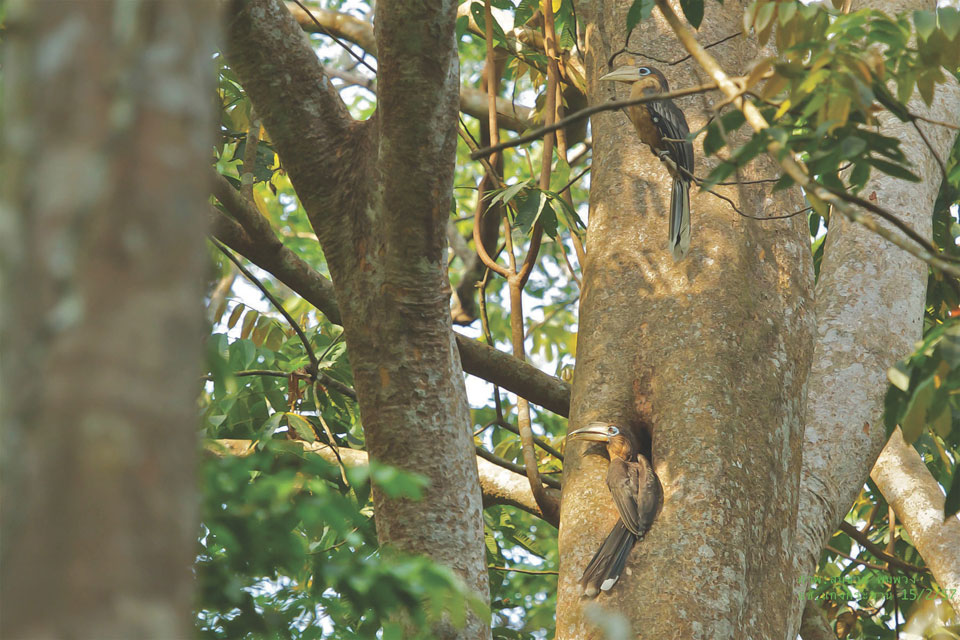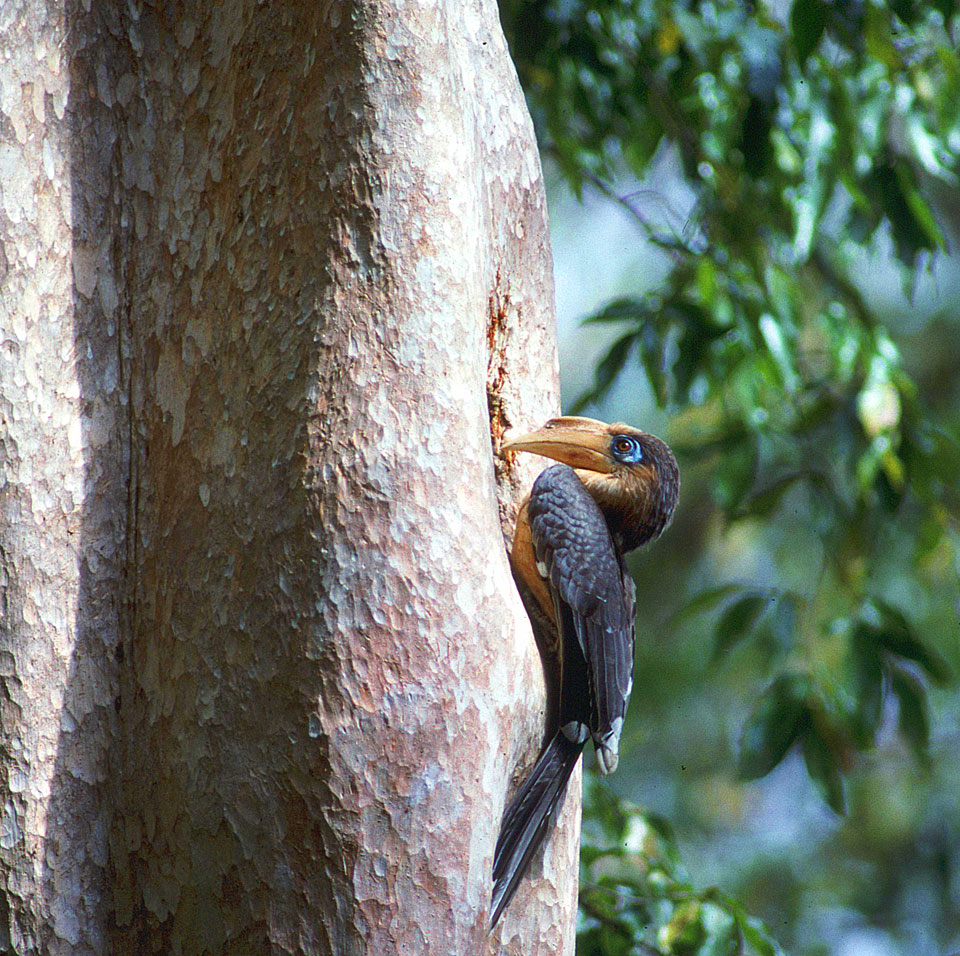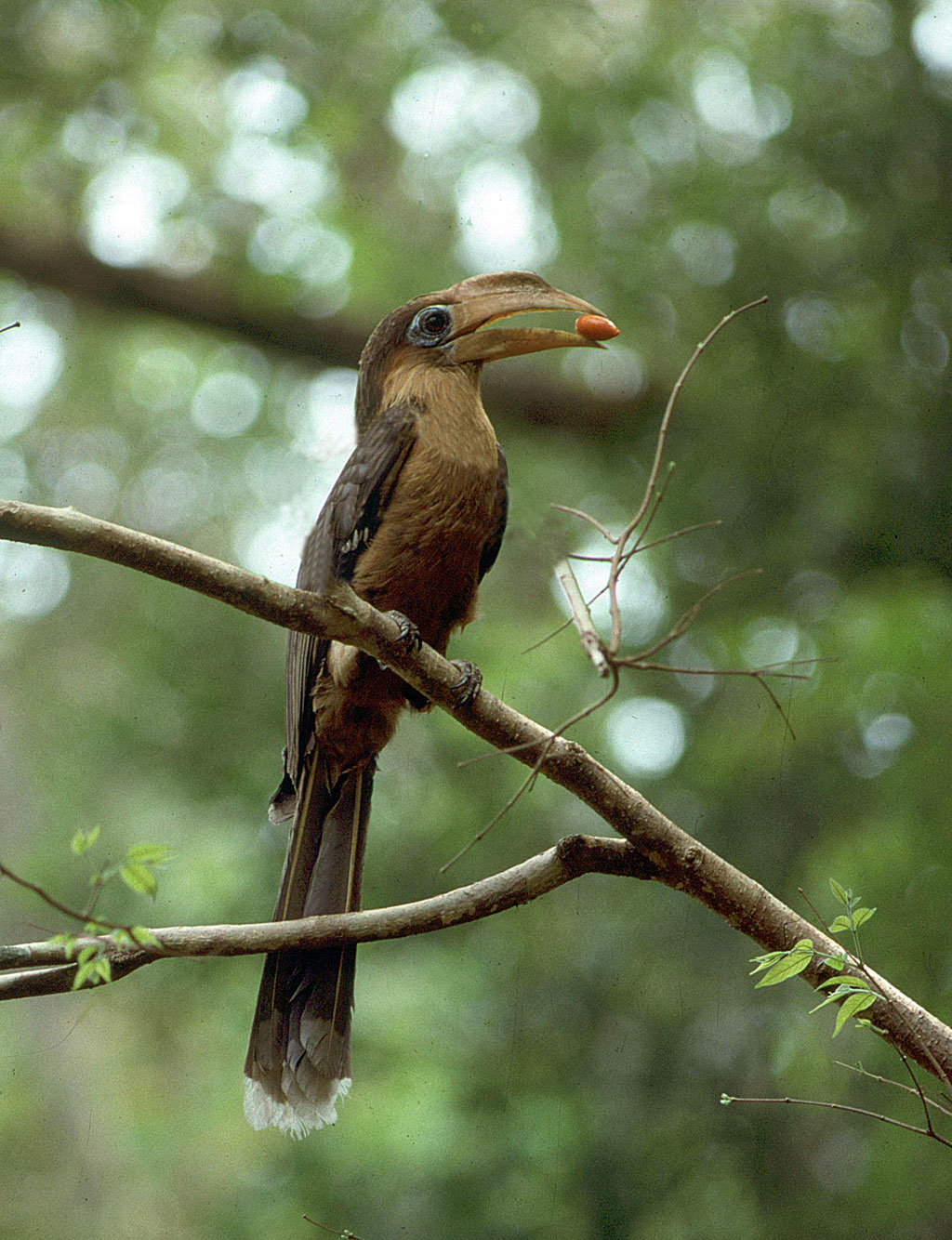Tickell’s Brown Hornbill ( Ptilolaemus tickelli )
Previously placed in genus Anorrhinus , together with White-throated Brown Hornbill with which it was also considered conspecific; the two differ in some details regarding plumage and bill color.
Previously placed in genus Anorrhinus , together with White-throated Brown Hornbill with which it was also considered conspecific; the two differ in some details regarding plumage and bill color.

Size 65-75 cm. Male 854-912 g; female 683-797 g. Medium-sized hornbill with generally dark brown plumage and rufous cheeks and throat and creamy bill and small casque both have small patch of blue naked skin around eye.
Juvenile resembles adult male but paler brown with light&yellow short bill without casque. The call is very similar to that of the White-throated Brown Hornbill.
Found in both evergreen and deciduous forests, it prefers dense primary forest. From the foothills to 1,500 m elevation.Occasionally visits higher forests. Similar to its sister species, it lives in a small group of 5-7 birds all year round, but large groups 0f more than ten can be seen.
Food comprises both fruits and animals where fruits include Polyalthia viridis (annonaceae), Canarium euphylum (Burseraceae), Cryptocarya pallen Beilschmiedia gammieana (Lauraceae), Aglaia spectabilis (Meliaceae) and Horsfieldia glabra and Knema (Myristicaceae); animals are insects, centripedes, snakes, skinks and lizards, crabs and mice.

The nesting season starts in the beginning of the year , in Myanmar eggs are laid in Feb-Apr; in western Thailand, female enters the nest in Jan-Feb and chicks fledge in May-Jun; nesting cycle takes 98±22 days, which is slightly longer than that of the White-throated Brown Hornbill.
This species is co-operative during the nesting with 1-5 male helpers. The nest is a natural cavity 1.5-28 m up in a forest tree, mainly Lagertroemia spp (Lythraceae). During one survey, a group 0f 8-10 males was present at the nest , and at least five of these males brought food to the nest.
Radio tracking of six males (four breeding males and two nest helpers) in dry evergreen forest in Thailand showed extensive ranges between 10-57 km2 (average 33 km2) for all year round, 12-37 km2 (average 28 km2) in the breeding season and 9-11 km2 (average 11 km2) in non-breeding season.
